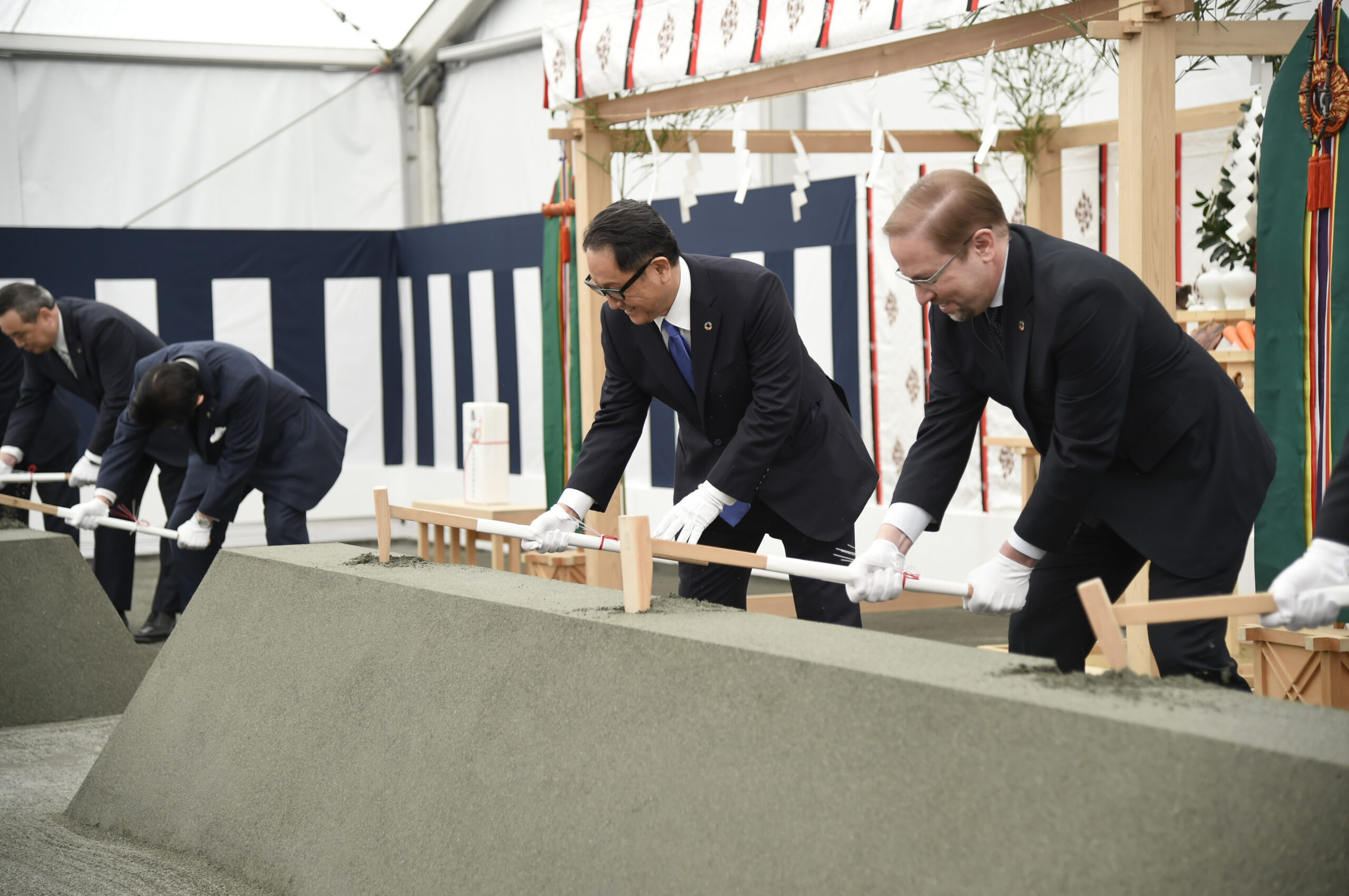トヨタのウーブンシティプロジェクトの開始に伴い、2月23日に地鎮祭が行われました。建設予定地であるトヨタ自動車東日本株式会社 東富士工場(静岡県裾野市)は2020年12月に53年の歴史に幕を閉じました。
一年ほど前、豊田章男社長は「未来都市」のプロトタイプを建設する計画を発表しました。トヨタによるプレスリリースでは、「人々が生活を送るリアルな環境」のもと、働き、遊ぶことができる場所を作ることがウーブンシティのビジョンであると強調しています。この都市はあくまでも「人間中心」で「進化し続ける」ことを意図しており、言い換えれば生きた実験室と呼べます。
この新たな未来都市のために、世界中の研究者、エンジニア、科学者が一堂に会し、人工知能(AI)、ロボット工学、自動運転車、スマートホームなどを創造、テスト、また開発できるコミュニティを促進します。これらの技術は、国連による持続可能な開発目標(SDGs)の達成するために役立つ新しいテクノロジーです。ウーブンシティはすべてが繋がっているエコシステムとして機能し、約2,000人の居住者と家がフルタイムで稼働するため、テクノロジーのテストと開発を効率的かつ迅速に行うことができます。
未来都市のデザインは、世界的に有名なデンマークの建築事務所ビャルケ・インゲルス・グループ(BIG)が担当しています。都市設計の背後にある彼らの考えは、今日の典型的な道路はほぼ、またはまったく構造を持たない混乱であるというものです。したがって、彼らは街を通る道を3つに分類、設計することから始めました。一つ目は「すべての車両が完全自動運転かつゼロエミッションの高速輸送専用の道」、二つ目は「スピードの遅い乗り物、また歩行者が共に利用できる道」、三つ目は「歩行者専用の公園内歩道のような道」です。これらのタイプ別の街路は、それぞれが公園や中庭を囲む3 x3の街区のウーブングリッドに織り込まれます。この構造は、人間、動物、車両、そしてロボットが交わる場を提供するため、穏やかな生活環境を確立しつつも、トヨタの自治とスマートシティインフラストラクチャに関するテストを向上させることを目的としています。
ウーブンシティの建物のデザインは、歴史的な日本伝統の忍耐力を意味し、新しいテクノロジーを通じてそれらを進化させていきます。都市の下には、都市のインフラストラクチャ全体が設置されています。そこには、街の水素発電、水ろ過システム、配達など、スマートホームに直接送られる自律配送のためのネットワークがあります。
世界初のプログラム可能な都市の建設を支援し、新技術の開発を求めるトヨタの追求において、彼らは志を同じくする人々とのビジネスパートナーシップの構築に関心を持っています。ビャルケ・インゲルスがそれを組み立てたように、「アキオは、他社との提携による新たな発見をうみだすためであり、これはトヨタの素晴らしさを世界に示すために行っていることではないと言う謙虚さを持っています。」(動画: こちら)
ウーブンシティの詳細については、こちらをクリックしてください。
February 23rd marked the commencement of Toyota’s Woven City project. The ground-breaking ceremony of Woven City took place, on the grounds of where a Toyota plant drew its 53-year history to a close in December 2020.
A little more than a year ago, Toyota president Akio Toyoda announced his plan to create a prototype ‘city of the future’. Toyota’s press release highlights that the vision of Woven City is to create a place where people can live, work and play in a real-world setting. In other words, the city intends to be ‘human-centred’ and ‘ever-evolving’, calling it a living laboratory.
This new city of the future will facilitate a community where researchers, engineers and scientists, from around the world, can all come together and create, test and develop new technologies which can help achieve the United Nations SDGs, such as artificial intelligence, robotics, autonomous cars, smart homes etc. The efficient and quick way of testing and developing technologies is possible as the Woven City will function as a fully connected ecosystem, and serve as a full-time home for approximately 2,000 residents.
Behind the design of the city of the future stands world-renowned Danish architect firm The Bjarke Ingels Group. Their logic behind the design of the city was rooted in the belief that today the typical street is a mess with little to no structure. Thus, they began the designing phase by splitting up the streets, into three separate forms of mobility. The first mobility path is meant for faster transportation where every vehicle is autonomous with zero emissions, the second mobility path will be a promenade shared by pedestrians and slower personal mobility, lastly, the third mobility path will be a linear park intended for pedestrians only. These types of streets will then weave together into a woven grid of three by three city blocks, each framing a local park or courtyard. As this structure provides a wide variety of intersections between, humans, animals, vehicles and robots, it intends to establish a serene living environment and elevates Toyotas testing of autonomy and smart city infrastructure.
The building designs in Woven City will signify the perseverance of old historic Japanese traditions while evolving them through new technologies. Underneath the city, the entire infrastructure of the city is found. There you would be able to find the city’s hydrogen power stories, water filtration system and a network for the autonomous delivery of goods, which connects directly to the smart homes above.
In Toyota’s search for the development of new technologies, which will aid the construction of the world’s first programmable city, they are interested in building business partnerships with like-minded visionaries. As Bjarke Ingels framed it, “Akio has the humility to say that this is not something we’re doing to show the world how great Toyota is. This is something we are doing because we want to make discoveries, and we have to make those discoveries in partnerships with other companies”(video: Here)
For more information about The Woven City click here
Reference:
Press release: Here
Toyota times: Here
Bjarke Ingels Group: Here
Designboom: Here






























